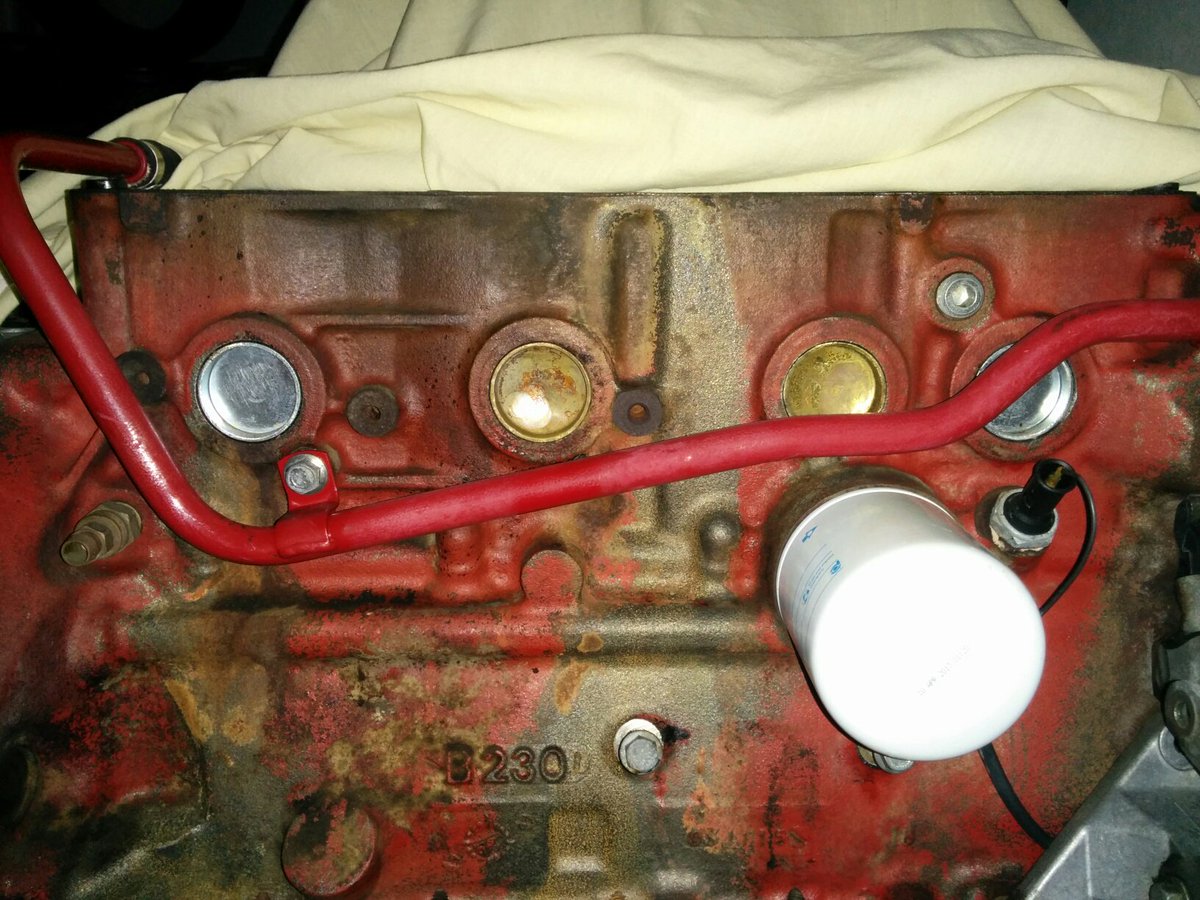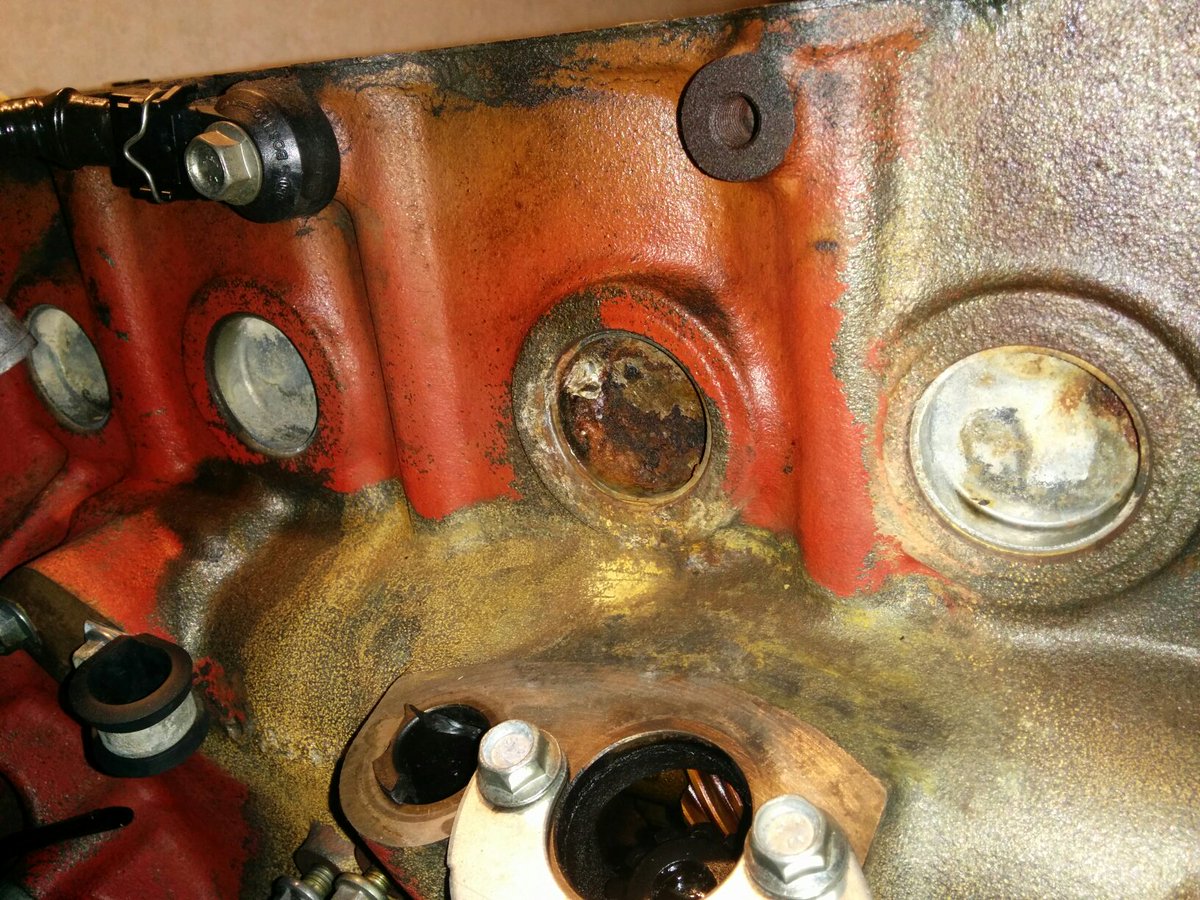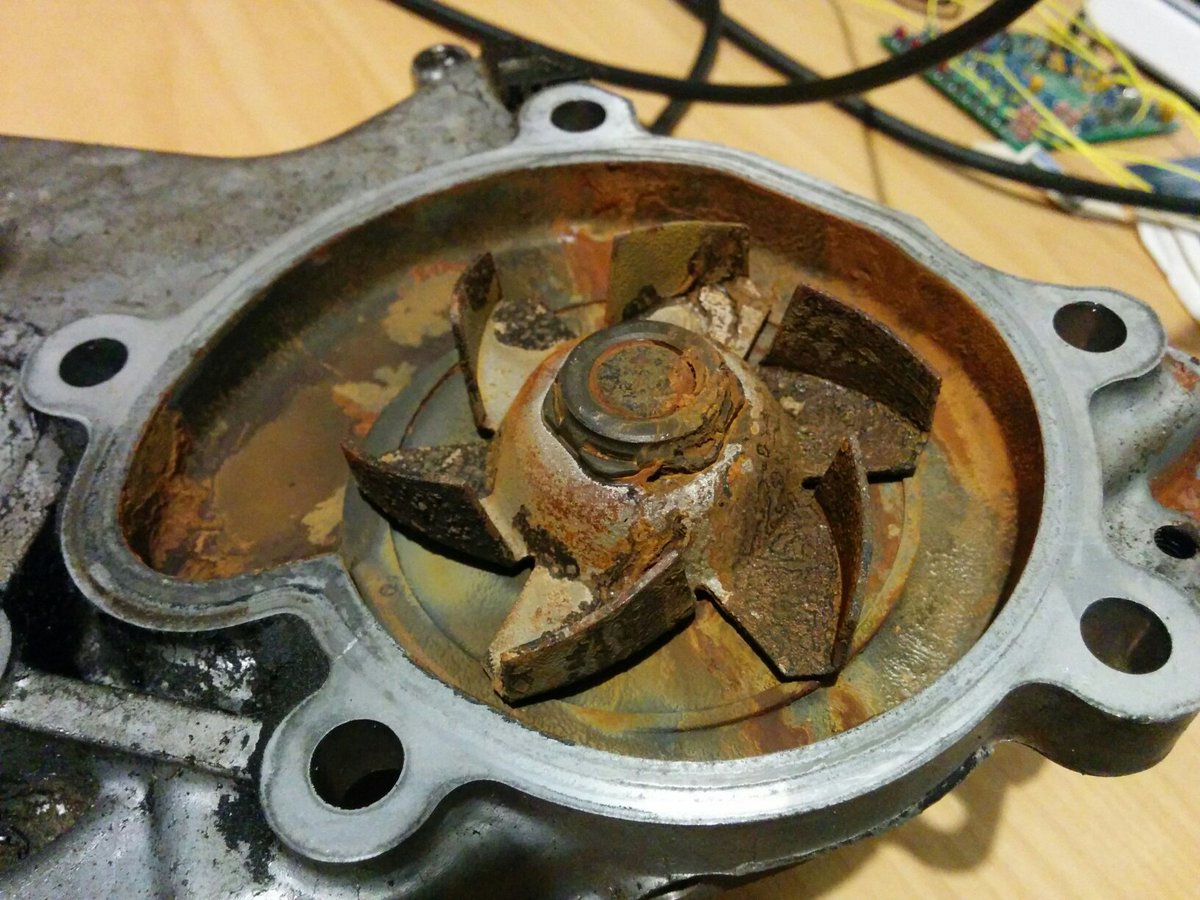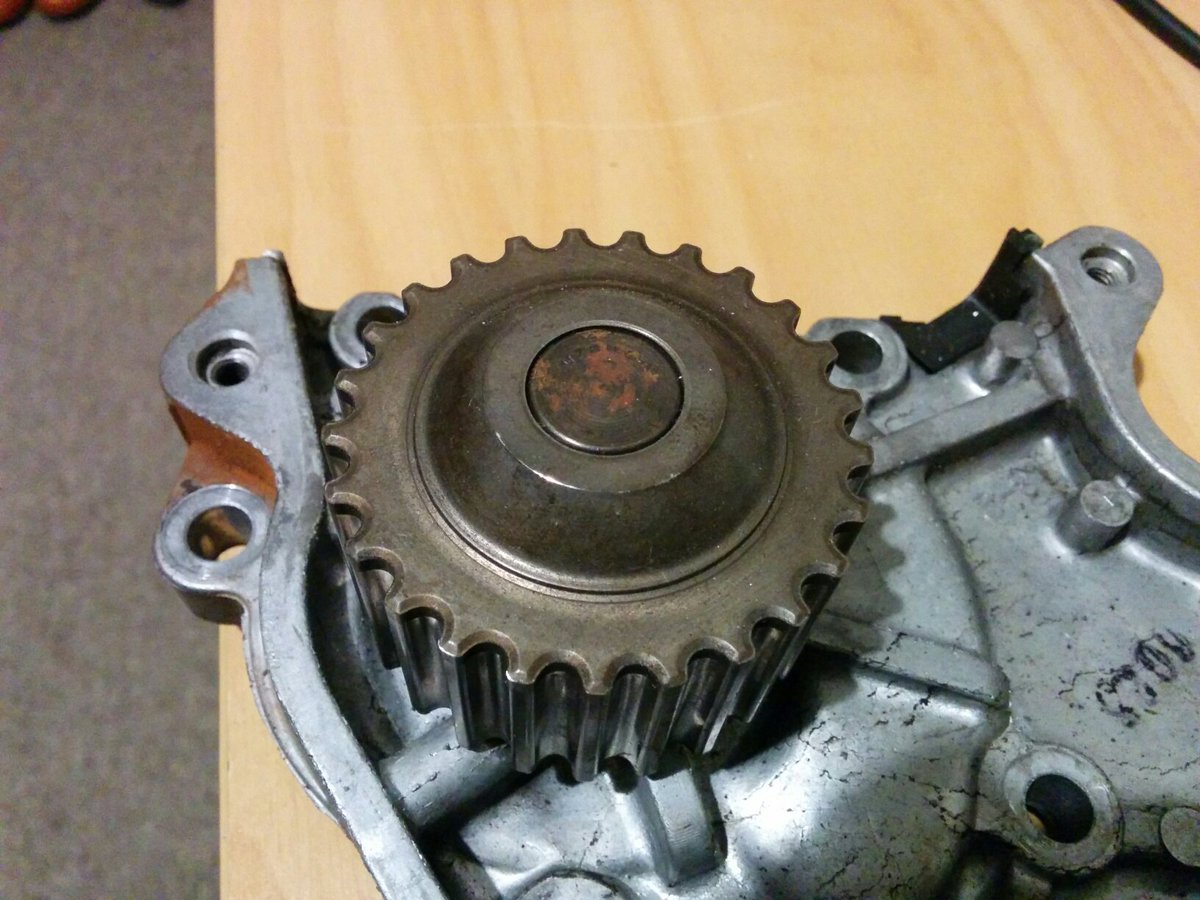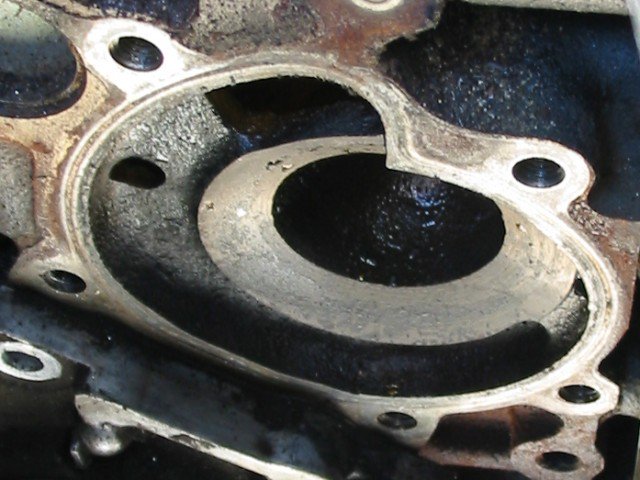1) This thread is a great lesson in not believing everything you read on the internet! Lots of good stuff, and lots of absolute horsepoos.

Also, lol @ Sim's only post in here.
2) This late 940 block has clearly had freeze plugs replaced presumably because they leaked (highly likely a lack of coolant = rust), or *maybe* because they blew out, non turbo vehicle.
https://twitter.com/FredCookeNZ/status/753190188176642048
https://twitter.com/FredCookeNZ/status/753190242388094980
3) I read 9 pages and no one puts a tape measure across the "big" and "small" water pump pulleys? Please can someone measure each and post what these figures are in some descriptive fashion, preferably with photos. I'll measure what I have here tomorrow morning and post some photos with this text that I'm writing now. Here we go:
Lower pulley on all four of my redblocks, two B230Fs and two B234Fs are 156mm with three grooves.
Water pump pulley on the two 1990 B234Fs is 137.8mm OD, single groove
Water pump pulley on my 1991 240 wagon B230F is 135.8mm OD, double groove (two belts)
No water pump pulley on my late 94ish squirter B230F, also headless, awaiting head from B234F...
Disclaimer, these are ODs, not comparable or useful for calculating drive ratios, just for comparing what's out there.
So, what exactly are the diameters of these two different B230F(T) pulleys? Please? Anyone? Dying to know.
4) My Mazda ute engine is making around 400hp, revs to 7300 dead stock, 8k for me, and has a cambelt driven water pump with 25 teeth and a lower sprocket with 25 teeth, giving a drive ratio of precisely 1:1. It looks like this:
https://twitter.com/FredCookeNZ/status/753471917890285569 and
https://twitter.com/FredCookeNZ/status/753472453725216770
OD of the impeller is 59mm and the gap between the inner edges of the folded sections is 46mm. How big are the Volvo pump impellers? Unkeen to yank one right now for various reasons.
The only cooling system issues I've had have been headgasket failure (for whatever root cause), otherwise fine. Yes, it's not relevant, but it's a data point for comparison. This vehicle has a big fat all alloy Japanese manufactured quality 50mm thick radiator built for an R32 Skyline and good for more than 500hp. The only time it's ever been warm is sitting still with no fan. Thick core = no circulation.
5) Anyone that thinks there is a constant pressure in all parts of the cooling system needs to study the concepts of pressure, flow, and restriction, repeatedly, until their eyes bleed.
5B) Anyone that thinks a gasket breach or hot spot boil up will be instantly relieved by a pressure cap several fathoms away needs to study the concept of inertia. Even air has it. Fans that blow are not the same as fans that suck.
5C) Even when the pressure cap on the header tank is wide open, it still functions as a restriction, and for large flow levels (that should not be seen in any OEM-like form) that restriction will allow a much higher pressure than intended to exist in the engine. If the engine can supply this pressure source at a rate higher than the cap can dissipate it, and nothing else releases anything, pressure will keep rising until something gives, or the supply rate equals the new higher dissipation rate, though that has a natural ceiling.
6) It's really nice to read that these engines do the cold recirculate thing, and block that passage off when they open, thanks for explaining/pointing that out, whoever did. I wish that Mazda engine of mine did this, it does not, it just blocks the flow leaving the coolant largely stagnant until it opens.
7) [New today!] So I would say a 1:1 drive would be a good thing, and shouldn't overheat at idle with an appropriate radiator and cooling fan (at least, not in my climate of mild 10-30C weather (mostly 15-25C)). Issues of "burping" are likely related to insufficient cooling capacity, insufficient flow for the heat generated, incorrect routing of flow (possibly from factory) or perhaps cavitation, but if these Volvo pumps are remotely like the Mazda one, spinning 7k with the stock "overdrive" pulleys shouldn't be a big deal IMO. I'm reminded of a video of a 1000+hp GTR RB26DET(T) engine on a dyno in Japan that vomited all of its coolant out every single run. Nothing could contain it. It generated heat so fast that it flash boiled in the head on every run. Or was it lifting the head and being pushed out by boost? Good question. Keep in mind that the insides of the head do not have massive fins for efficient heat transfer, just mostly smooth surfaces, which doesn't help. Some localised pressure and temperature logging would be a good thing to have in various spots. How much power are the problematic cars making? And how well are they put together? I can't see myself having any issues pushing 300whp from a TD05HR 16G on a 16V B230F+16V+T setup. Unless something is just plain wrong.
1230am, time to throw some rubbish in the dishwasher, scrub my teeth that I still have after a high speed road rage chase today, and head to bed. <several hours pass> <photographs and measurements inserted> <submit button pressed>
^ All lies, it's now 107am, the following day, over 24 hours later, and I'm too tired to complete this post, so I'll have to do it tomorrow. Zzzz.
Now 6pm the following day, nearly 48 hours after I wrote most of that, and I'm finally finishing up the post. 633pm, posting! Finally. Hooray. Enjoy! /me dodges tomatoes/eggs/rocks.

 Also, lol @ Sim's only post in here.
Also, lol @ Sim's only post in here.